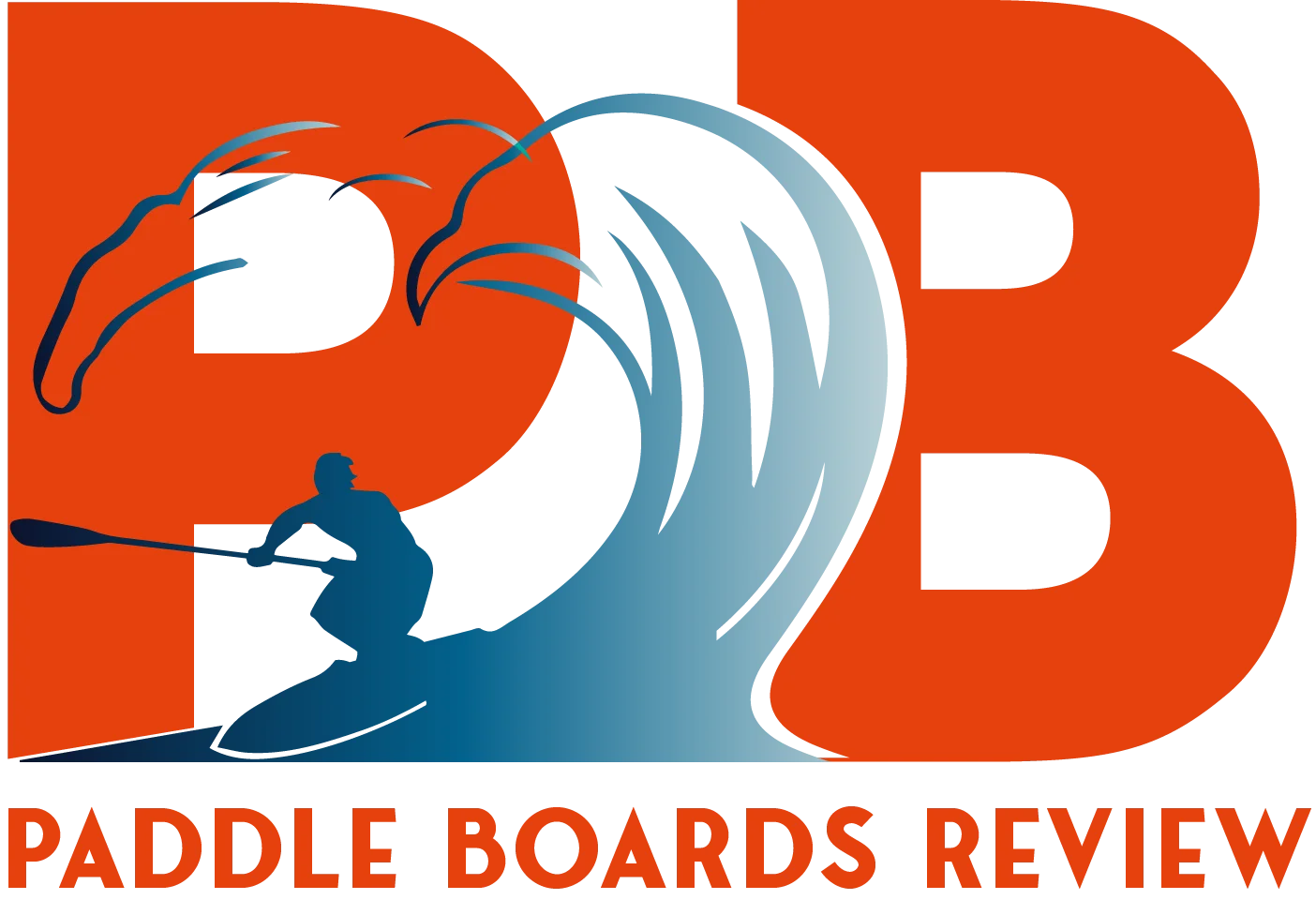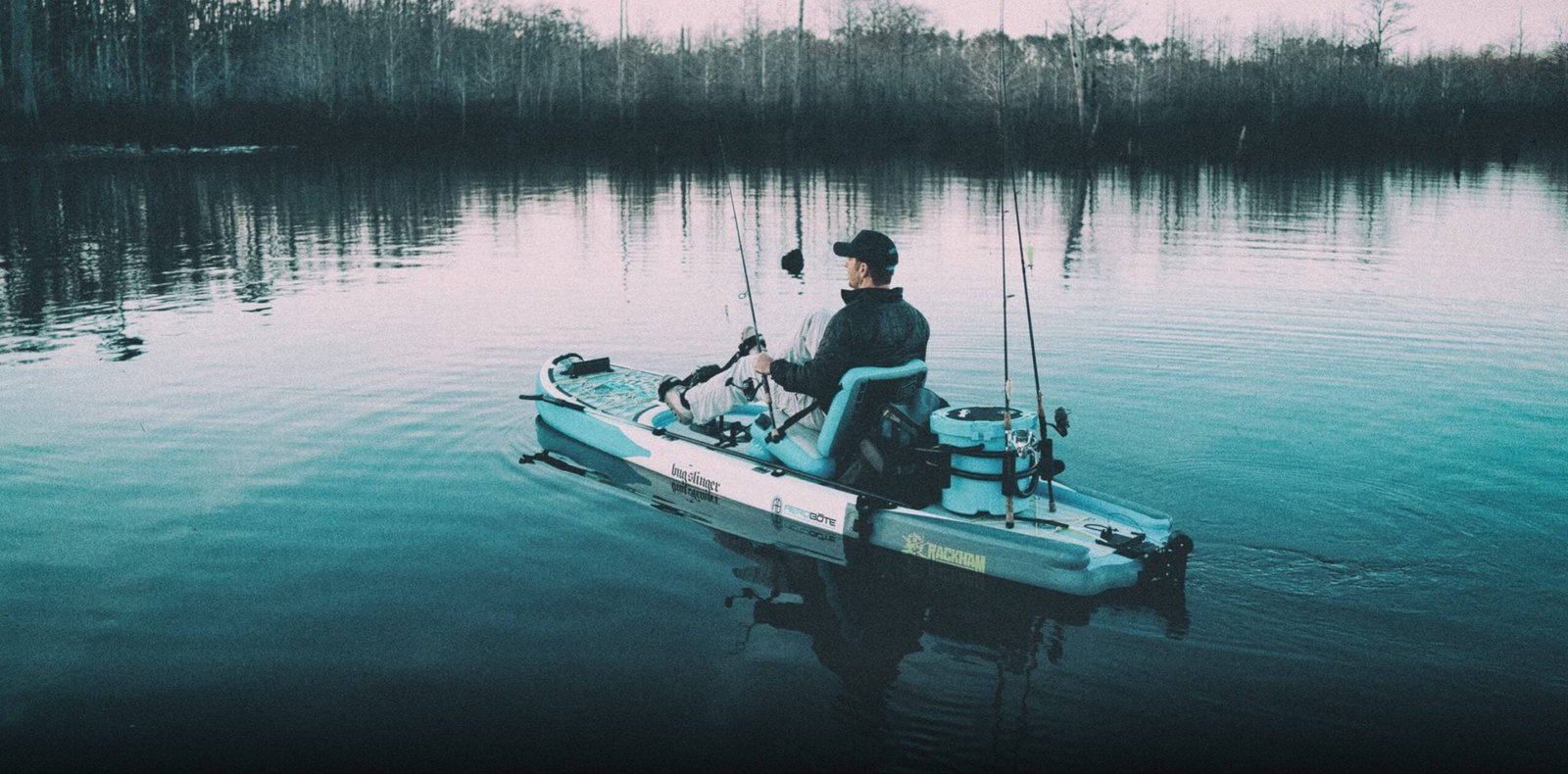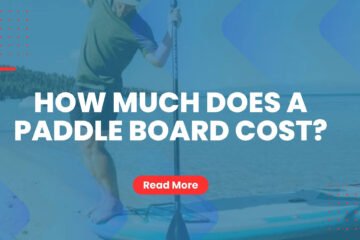Fishing on a paddle board offers an extraordinary fusion of outdoor adventure and aquatic serenity. It’s a sport that lets you explore pristine waters, enjoy the beauty of nature, and potentially reel in some impressive catches, all while standing on a paddle board.
Whether you’re a fishing enthusiast looking to try a new and exciting approach or a paddle boarding enthusiast eager to add some angling to your repertoire.
This guide is here to help you navigate the waters – literally and figuratively. From gear selection to paddle board stability and casting techniques, we’ll cover all the essential aspects of how to fish on a paddle board, making your aquatic angling experience not only enjoyable but also successful.
So, let’s embark on this journey and learn how to make the most of this unique and thrilling outdoor activity.
Why fish from a paddle board?
Fishing from a paddle board provides a unique connection to nature. The elevated perspective offers better visibility for spotting and casting to fish, while the quiet approach minimizes disruption to the environment. Plus, it adds a healthy, active element to your angling, making it a fulfilling and enjoyable experience.
Advantages of paddle board fishing
Paddle board fishing is a fantastic choice for anglers. It offers a unique vantage point for spotting and casting to fish, all while keeping things calm and peaceful on the water. It’s also a great way to stay active and explore hidden fishing spots. In a nutshell, it’s about improving your angling experience and enjoying nature from a new perspective.
Disadvantages of paddle board fishing
Paddle board fishing, while enjoyable, has its downsides. Beginners may struggle with balance, and it’s weather-dependent – strong winds can be a challenge. Limited storage space means less gear, and the lack of seating can make long trips less comfortable. Consider these factors alongside the advantages before diving in.
Kayak VS Paddle Board Fishing
When deciding between kayak and paddleboard fishing, consider about what works best for you. Kayaks are ideal for longer fishing trips since they provide stability and more space for your gear. They include comfortable seats for a relaxing experience and are ideal for individuals who want to sit while fishing. Even in rougher seas, their design ensures stability.
Paddle boards, on the other hand, are more maneuverable and allow you to stand up for a greater perspective of the lake. They are environmentally friendly and provide a full-body workout, but they may not be as comfortable for extended fishing sessions, especially if you like sitting. Finally, the decision between kayak and paddle board fishing comes down to your own preferences and the type of fishing experience desired.
How to Choose Your Fishing Sup?
Several aspects should be considered while choosing the best fishing stand-up paddleboard (SUP) to ensure an enjoyable and successful fishing experience. First of all, consider the stability of the board, since a broader and more stable SUP will give a better platform for casting and reeling in your fish.
Next, analyze the size of the board, selecting one that is appropriate for your body weight and the sort of water you will be fishing in. Examine the board’s construction materials as well, favoring long-lasting, puncture-resistant ones. Attachment points for fishing gear, such as rod holders and storage compartments, can considerably improve your fishing trips.
Furthermore, consider transportation and storage, choosing a SUP that is easy to move to your favorite fishing areas and store when not in use. By carefully considering these factors, you can select the best fishing SUP for your fishing adventures, demonstrating how to fishing on a paddle board with delicately.
Maximum weight for paddle boarding
Determining the limit weight for paddle surfing is important for assuring a safe and enjoyable experience, especially while fishing on a paddle board. Paddle boards are built to accommodate certain weight limitations, which normally range from 200 to 350 pounds or more, depending on the size and design of the board. Excessive weight may impact the board’s stability and performance, perhaps resulting in accidents or damage.
Consult the manufacturer’s specifications and consider your body weight, gear, and any additional passengers or fishing equipment you want to bring along to determine the suitable maximum weight capacity for your paddle board. Staying within the weight limit will help you keep balance and control while out on the water, ensuring that your paddle board fishing trips are not only successful but also safe.
Essential Gear for Fishing on a paddle board
When engaging in stand-up paddleboard (SUP) fishing, there are essential pieces of gear you need for safety and efficiency.
Paddle Board:
The paddle board is the foundation of your paddle board fishing setup. Look for a fishing-specific paddle board that offers stability, a wide deck for gear and angler comfort, ample storage space, and attachment points for accessories like rod holders and action mounts. These features are vital for a successful and enjoyable fishing experience.
Fishing Pole
Your fishing rod is your primary tool for casting, reeling in fish, and sensing strikes. Choose a fishing pole that is appropriate for your target species and chosen fishing strategy, whether casting, trolling, or fly fishing.
Rod Holder
A rod holder is an important accessory that allows you to safely store your fishing rod while paddling, changing bait, or doing other tasks. It keeps your rod close at hand and ready for action.
Tackle
Fishing tackle includes all of the equipment required to attract and catch fish. This includes lures, baits, hooks, lines, sinkers, and other equipment specifically designed for the fish species and fishing circumstances you’re facing.
PFD (Personal Flotation Device)
When paddle board fishing, safety is of the highest priority. A PFD is required for your safety on the water. It keeps you floating in the case of accidental fall and is frequently required by law.
Anchor
An anchor is a useful tool for keeping your position on the sea stable. It enables you to secure your paddle board in a specified spot, which is great for fishing in currents or windy situations.
Cooler
A cooler is essential to keep your catch fresh. It can also be used to store food, beverages, and bait. Look for a cooler that can be strongly attached to your paddle board and is suitable for it.
Bucket
A strong bucket is a flexible piece of fishing equipment that may be used to store live bait, caught fish, or other fishing necessities such as bait containers and additional tackle.
Net
When dealing with larger fish, a fishing net is important for properly landing and managing your catch. It minimizes the chance of harm to both you and the fish and can help the landing procedure go more smoothly.
Ankle Leash
An ankle leash is an essential safety gear that connects you to your paddle board. In the case of a fall, it keeps your board from floating away, allowing you to swiftly restore control and continue fishing without disrupting the adventure.
Do I need a paddle board with an outboard motor?
This is a common question when deciding the sort of paddle board to use for various aquatic activities. The decision is based on your intended use and preferences. Outboard paddle boards can give a faster and more effortless method for traveling longer distances or reaching specialized fishing grounds.
They are especially handy if you seek a relaxing experience with little physical exertion. However, paddle boards with outboard engines are often heavier, more costly, and may require maintenance.
A regular paddle board without a motor may be a better alternative if you prefer a more classic and physically engaging paddle board experience.
The perfect sup fishing setup
The perfect stand-up paddleboard (SUP) fishing setup requires a careful combination of utility and personal preferences. The ideal SUP fishing setup usually starts with a stable and large paddle board that serves as an effective angling platform.
Fishing rod holders, which keep your rods secure and accessible, a leash for safety, and an at-ease life jacket for personal protection are all essential gear. Consider deck cushioning or traction pads to improve comfort and grip, letting you keep your balance while casting or reeling in your catch. A dry bag is vital for protecting your valuables from water damage. An anchor system can help you stay in a favorite place while fishing and a tackle box mount or bag will keep everything organized.
Whether you choose an outboard motorized paddle board for convenience or a conventional SUP for a more physically engaged experience, the ideal SUP fishing setup adapts to your fishing style, ensuring a fun and successful activity.
Conclusion
Fishing from a paddle board is a unique opportunity to combine outdoor adventure with a peaceful connection to nature.
This comprehensive guide explored the advantages and disadvantages of SUP fishing, the difference between a kayak and a paddle board, and the main factors to consider when choosing the best fishing SUP.
Safety is still of the highest priority, with a focus on weather awareness, paddle board stability, and the necessity of essential gear. Whether you’re an experienced fisherman or a first-timer, these tips will ensure a rewarding and safe SUP fishing experience, allowing you to enjoy the best of both worlds: fishing and paddle boarding. Remember to gear up, paddle out, and immerse yourself in nature’s splendor as you engage in this exciting outdoor adventure.




